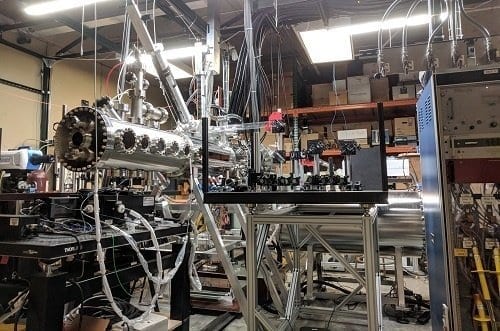
New research has provided a comprehensive overview of new small-scale nuclear reactors, which could be suitable candidates to cope with the world’s ever growing demand for energy.
A detailed assessment of a new, smaller type of nuclear reactor has been published to help policymakers decide on the best way to meet the growing demand for energy.
According to official estimates world energy consumption in 2035 will be more than double that of 1995. A substantial challenge for engineers and scientists over the coming decades is to develop and deploy power plants with sufficient capacity and flexibility to meet this increasing need while simultaneously reducing emissions.
The new research paper, published in the academic journal Progress in Nuclear Energy, aims to show to what extent a new type of nuclear reactor, termed the ‘Small Modular Reactor’ (SMR), might provide a solution to fulfil these energy needs.
Modern SMRs are a relatively ‘new product’ in the nuclear industry, being of a smaller size making it easier to implement new technical solutions and for construction purposes.
Lead author Dr Giorgio Locatelli, from the School of Engineering, University of Lincoln, UK, provides a state-of-the-art appraisal of SMRs, particularly focussing on the Light Water Reactor (LWR), detailing the economic and social limitations for their viable deployment.
Dr Locatelli said: “With fusion-based power plants not currently being considered viable for large-scale deployment for at least 40 years, other technologies must to be considered. Renewable and high efficiency combined gas-fired plants, along with nuclear power plants, are regarded as the most suitable candidates, with Small Modular Reactors (SMRs) developing as a favoured choice.
“Given the extreme relevance and complexity of the field, this paper aimed to bring together the contributions of scholars and practitioners with state-of-the-art papers and reports.”
One of the main issues surrounding nuclear power is safety, particularly following the Fukushima accident.
The simplification, standardisation and compactness of SMRs allows for certain improvements on reactor safety and physical protection, although these are design specific. These improvements are primarily due to SMRs being “passive systems” that dramatically reduce the effects of human error and perform well and predictably in extreme circumstances.
Their small size makes them a good option for locations that cannot accommodate large-scale plants and they also require limited upfront capital investment.
The Latest on: Nuclear reactors
[google_news title=”” keyword=”Nuclear reactors” num_posts=”10″ blurb_length=”0″ show_thumb=”left”]
via Google News
The Latest on: Nuclear reactors
- Why nuclear deterrent will get worse before it gets betteron April 30, 2024 at 11:52 am
Our nuclear deterrent needs modernization, especially given the threats we face from an aggressive China and an expansion in the number of nuclear competitors worldwide.
- Unthinkable Revival of Nuclear Plants Is a Reality in US Shifton April 29, 2024 at 5:00 am
More than a dozen US reactors shut down in recent years because they were too costly to operate, struggling to compete against renewable power and plants that burn cheap natural gas. Conventional wisdom long held that such closures were permanent. Now, the industry is rethinking that view.
via Bing News










